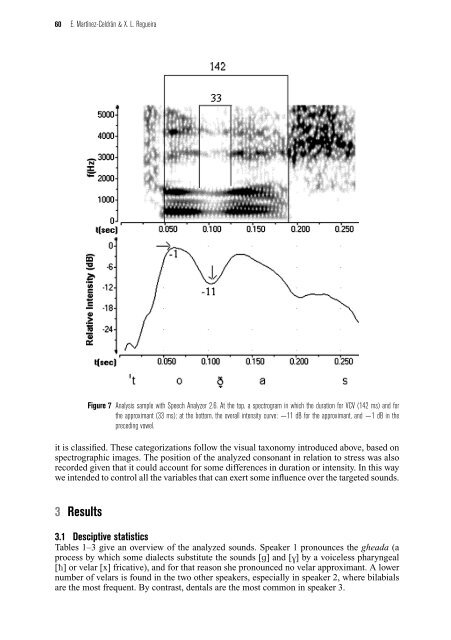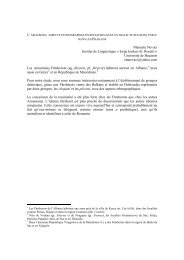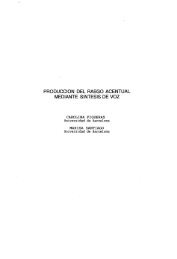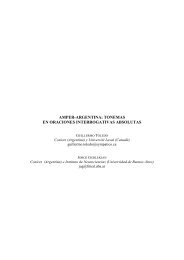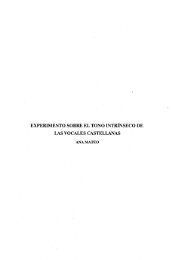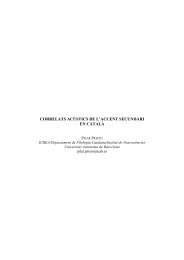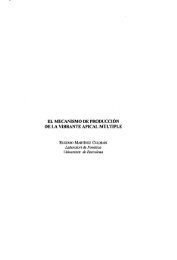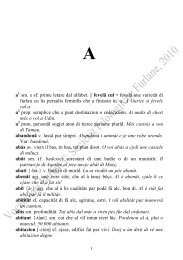Spirant approximants in Galician - ResearchGate
Spirant approximants in Galician - ResearchGate
Spirant approximants in Galician - ResearchGate
You also want an ePaper? Increase the reach of your titles
YUMPU automatically turns print PDFs into web optimized ePapers that Google loves.
60 E. Martínez-Celdrán & X. L. Regueira<br />
Figure 7 Analysis sample with Speech Analyzer 2.6. At the top, a spectrogram <strong>in</strong> which the duration for VCV (142 ms) and for<br />
the approximant (33 ms); at the bottom, the overall <strong>in</strong>tensity curve: −11 dB for the approximant, and −1 dB<strong>in</strong>the<br />
preced<strong>in</strong>g vowel.<br />
it is classified. These categorizations follow the visual taxonomy <strong>in</strong>troduced above, based on<br />
spectrographic images. The position of the analyzed consonant <strong>in</strong> relation to stress was also<br />
recorded given that it could account for some differences <strong>in</strong> duration or <strong>in</strong>tensity. In this way<br />
we <strong>in</strong>tended to control all the variables that can exert some <strong>in</strong>fluence over the targeted sounds.<br />
3 Results<br />
3.1 Desciptive statistics<br />
Tables 1–3 give an overview of the analyzed sounds. Speaker 1 pronounces the gheada (a<br />
process by which some dialects substitute the sounds [g] and[V§] by a voiceless pharyngeal<br />
[è] orvelar[x] fricative), and for that reason she pronounced no velar approximant. A lower<br />
number of velars is found <strong>in</strong> the two other speakers, especially <strong>in</strong> speaker 2, where bilabials<br />
are the most frequent. By contrast, dentals are the most common <strong>in</strong> speaker 3.


